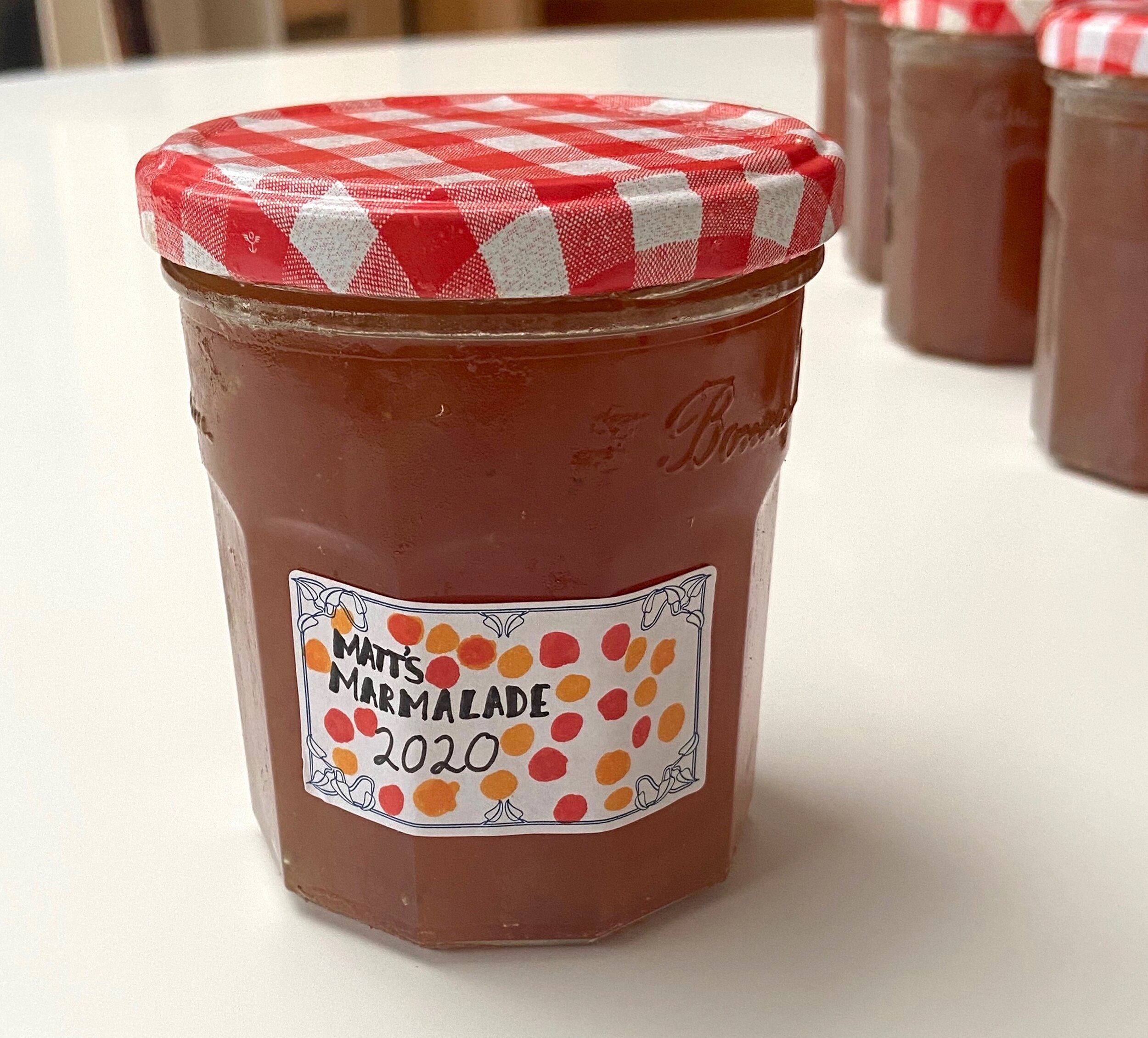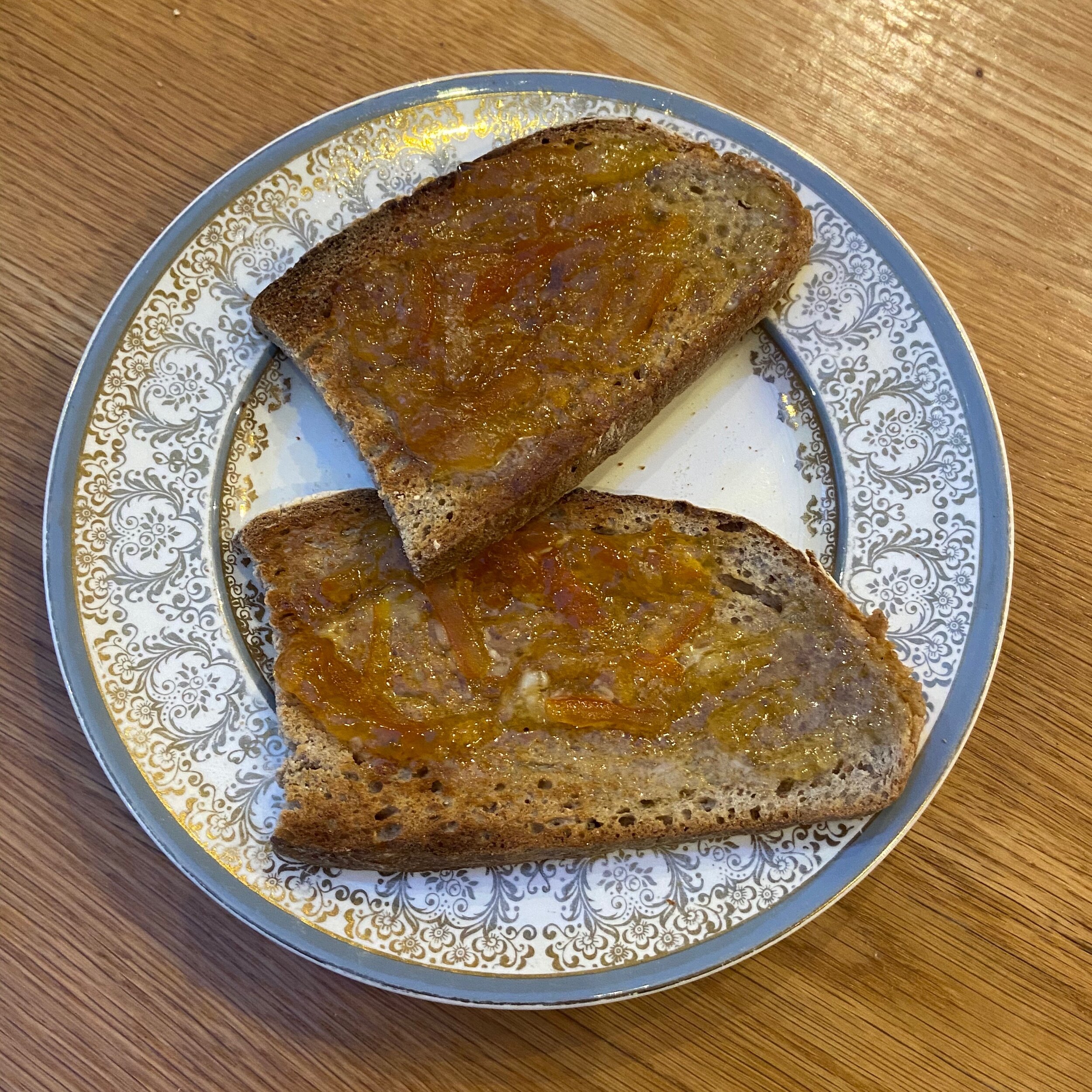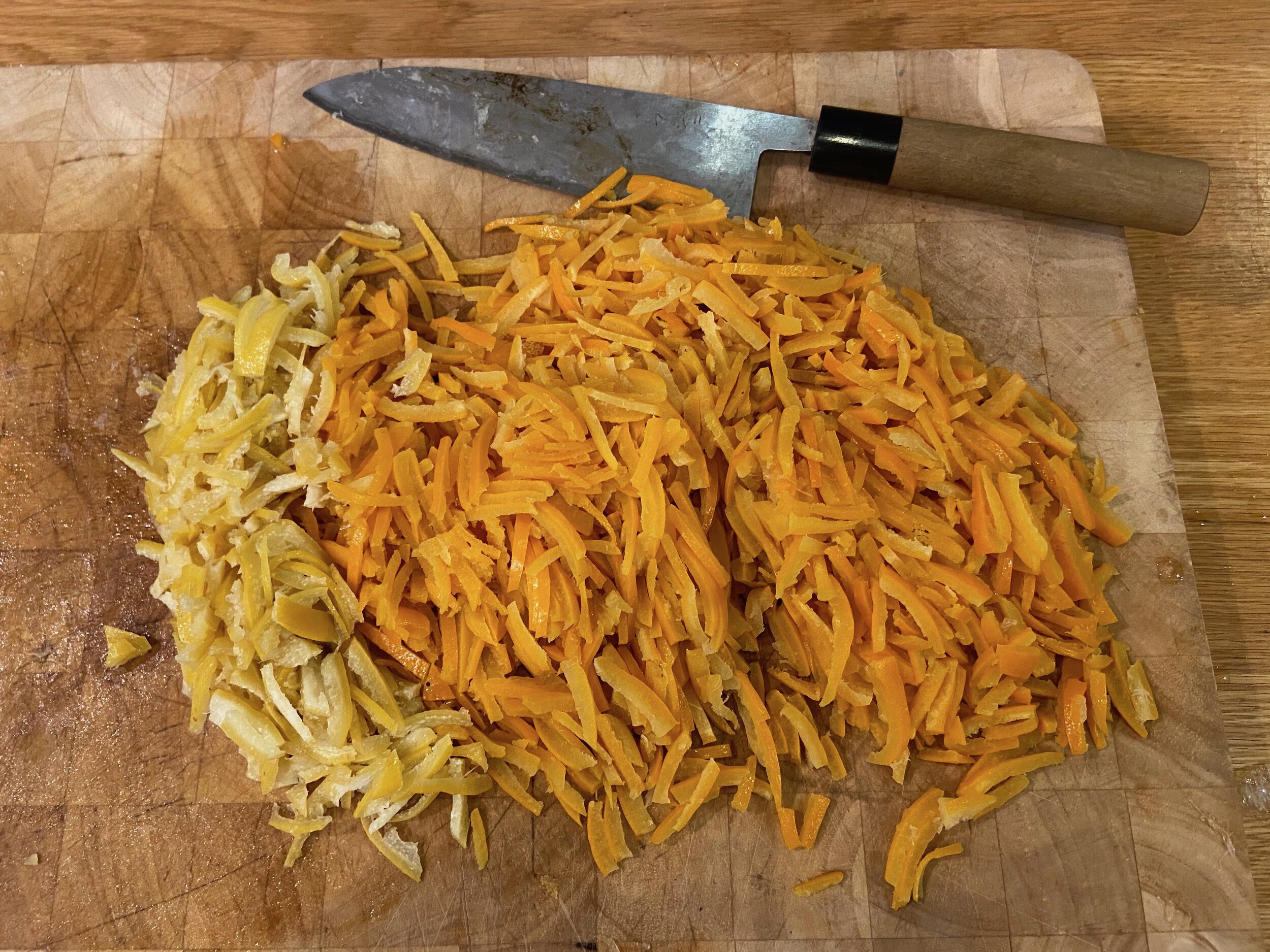Advertisement
Consuming passions: Marmalade
21 January 2020 · Consuming passions

by Matthew Cockerill (ckbk co-founder)
Marmalade making has been described as a cult or secret society, but if so it is a cult with increasing mainstream visibility. The marmalade awards at Dalemain House in Cumbria – held every March, and now in their 15th year – attract thousands of entries from around the world.
So what is all the fuss about? Having first been bitten by the home-made marmalade bug a decade or so ago, I would say that a key reason marmalade making is so rewarding is that – with a modicum of effort – anyone can produce something that is unambiguously superior to the store-bought alternative. Not something you can say of macarons, for example…
So here’s a quick ckbk marmalade resource guide for newbies:
1. Sourcing your Sevilles

Sevilles on sale in Borough Market
The bitter Seville oranges traditionally used for marmalade have a short season from late December to mid-February, and their appearance in the depths of winter promises therapeutic hours to be spent chopping peel, sterilizing jars and massaging muslin bags.
In the UK, Seville oranges are easy enough to obtain – they are stocked by most of the major supermarkets. Those in other countries may find it a little more difficult to track down the appropriate bitter orange variety, but those with a suitable climate, patience, and access to outside space can always consider growing their own.
Some people do take the opportunity to freeze Sevilles while they are in season so they can continue making marmalade throughout the year. While technically possible, this does seems rather perverse, given that marmalade’s whole raison d’être is to act as a “preserve” with no need for refrigeration. Home-made marmalade lasts for years, and if anything improves with age – it is certainly very satisfying to be able to retrieve a jar of a favourite vintage from the cellar.
2. Other fruit (and non-fruit) marmalades
In other European languages marmelade can refer to any fruity preserve, but in the UK the archetypal marmalade – the one in the sandwiches Paddington keeps under his hat – is very definitely made with Seville oranges. Still, outside Seville season there are no end of possibilities including grapefruit, kumquat, tangerine or lime. Or the classic three fruit marmalade combination (sweet orange, lemon and grapefruit). Then there are the non-citrus marmalades - apple, cherry, strawberry, not to mention onion, tomato and carrot. Darra Goldstein notes in The Oxford Companion to Sugar and Sweets that “marmalade” comes from the Portuguese word “marmel” for quince – so if you want to be super-traditional, consider Eliza Acton’s quince marmalade.
3. Variations on a theme

“Breakfast like a king”
Some adventurous types 'enhance’ their marmalade with various aromatic additions. ckbk includes not one but two recipes for lavender-scented marmalade, for example. A slug of whisky is also popular, as is ginger, and replacing some or even all of the sugar with honey is another way to jazz things up. It’s easy to go overboard with this sort of thing though. Personally, I apply a marmalade version of the German brewer’s Reinheitsgebot and stick to the basics – there is so much that can be achieved with nothing more than Seville oranges, lemons, sugar and water.
Finding the right marmalade recipe
ckbk has dozens of Seville orange marmalade recipes to choose from. Like many marmalade makers, I’ve tuned a personal methodology over the years. Here’s a link to the recipe which got me started. It is very similar to Katie Stewart’s recipe in The Times Cookery Book, except that the oranges are boiled first, allowing the flesh and pith to be scooped out with a spoon. One aspect I’ve tweaked is that I weigh myself while carrying the marmalade, standing on the bathroom scales, to check if it is sufficiently reduced. (Weighing the pan alone didn’t work as it is too light to trigger the scales.)
Fine-tuning
How thick a set? Commercial marmalade tends to be solid and gelatinous, but with homemade a more delicate set is arguably preferable.
So should you rely entirely on the pectin in the oranges, or add in some extra to be safe? Josceline Dimbleby’s approach of a 50/50 mixture of regular sugar and pectin-boosted jam sugar seems to work well, in my hands at least.
Dark and intense or light, fresh and fruity? The flavour profile will be very different depending on the length and vigour of the boiling process. Those who like their marmalade really dark sometimes go as far as to add black treacle.
Fine shreds or chunky? More to the point, how to cut them without succumbing to repetiive strain injury? Confetti scissors are one option, but a good sharp chef’s knife will do the job if you get your peel-stacking technique right.

One batch of shredded peel ready for the preserving pan
What to do with all the marmalade you made?
As mentioned in this piece about ckbk in The Times, home-made marmalade makes a great gift! But if, after all the gift-giving and sourdough toast-eating, you still have a few jars left, there are hundreds of great sweet and savoury recipes on ckbk which make use marmalade as an ingredient.
Here’s a collection with some of my own favourites, all of which are improved immeasurably when made with the home-made article. Transforming Queen of Puddings into Goddess of Puddings, or turning Peking Duck leftovers into a fusion cuisine sandwich - as Homer Simpson almost said: ‘Marmalade – is there anything it can’t do?”
Resources
Sign up for ckbk's weekly email newsletter
As an added bonus you will receive a free PDF download featuring recipe highlights from our favorite cookbooksAdvertisement

